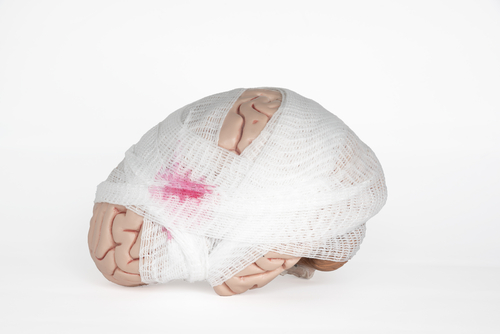I want to talk to you guys about concussions, the nerve system, as well as the spinal structure. Maybe you’ve suffered from a concussion, maybe you’ve just felt the symptoms, and maybe that concussion was maybe unreported. What research says is out of one of every two concussions, unfortunately, one of those is not reported or it’s just missed. A lot of times, most people don’t have the same symptoms.
Everyone’s brain is different. Everyone’s nervous system is different. Maybe you’re experiencing headaches when someone else might not be experiencing headaches, maybe drowsiness may be extremely tired, maybe you just never feel rested, maybe even some emotional outbursts, maybe angry, unhappy, just irritable, maybe some depression, anxiety. Here’s the thing. The brain is an amazing, amazing sponge. If that has been jostled and it takes 160 Gs force to cause that concussion of the brain sloshing, maybe on the front, the back, the size of the skull, damaging the skull.
But here’s the other thing most people don’t know. If it takes 160 Gs of force to damage that brain and slosh it around. That’s a lot of force, right? Did you know it only takes 4.5 Gs of force to damage and injures the neck? Here’s the thing. When you have a concussion, you also have an injury to the neck. Now here’s the thing. What do you think is going to be better? Maybe also fixing the neck, correcting the neck to help that concussion? Absolutely. The two for one special.
The reason why I know this is because, at 18, I actually was listed as brain-damaged from multiple concussions. I had eight concussions in 10 years. And that was due to soccer. I was a soccer goalie. Now what I learned from that is every time I had a concussion, it actually took longer and longer to heal, that concussion symptoms would last longer and longer and longer. Unfortunately, my last one did list me as brain-damaged, but what I found was I found a chiropractor.
He started working on my neck to make sure the proper communication can go from the brain to the body, as well as the body back up to the brain. And simply put, he looked and focused most of his attention on the upper cervical region. Because here’s the thing. The brainstem is actually housed and protected in these top two bones. If they are shifted, twisted, contorted, you actually have a double whammy. You’ve now put pressure onto that brainstem that can’t communicate for that brain back and forth.
Because here’s the thing. When the brain communicates or heals, it needs that brainstem. It doesn’t just communicate side to side or back to front. A message will start in the brain, travel back to that brainstem, and then back up to the brain. If that bone’s shifted and twisted and pulls on that brainstem, what do you think happens to that message? That message might get misinterpreted. Maybe that healing message gets misinterpreted.
And then unfortunately over time, that concussion symptoms last longer and longer and longer. A lot of times concussions can happen from many different activities. A lot of times we see that with sports. Unfortunately, boys, when they play football, that’s most common. Female soccer is the second most common. And men’s ice hockey is actually the third most common. What we also know is two out of every 10 high school athletes will, unfortunately, have a concussion this year. We play very contact sports.

